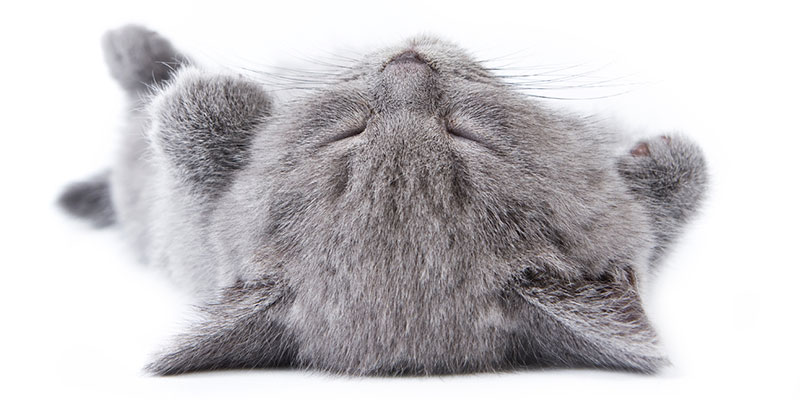It’s Up To Your Body
Generally speaking, lying on your back creates the most consistent support for your spine. Your muscles and tissues can relax evenly in all directions. Like a baby, or a kitten napping on its back, you can just lie flat and your musculoskeletal system will be all lined up for restful sleep.
Except when that’s not true. If you have a wonky back, a sore hip, shoulder pain, breathing problems, or other bodily quirks (or you are pregnant), flat-on-back may not be the best sleeping position for you.
People sleep with themselves for a lifetime, and most have figured out what position works best. If you used to sleep happily on your back, however, and now find yourself contorted into a new, uncomfortable position or using multiple strategically-placed pillows, it could be your body has been searching for a way to compensate for a mattress that is no longer supporting you.
Not Sleeping Well?
If you miss a time when back sleeping was sound and comfortable, first consider replacing your mattress. You may need something firmer than you thought, for solid back support. You may need a more forgiving surface, or denser support and a softer surface. An optional topper can offer extra cushioning that relieves surface pressure without compromising the stability you need for your spine. If you have nerve-related back pain, choose a shallower topper. The 2″ Savvy Woolsy creates a cozy, comforting surface without letting you “sink” so much that back support is undermined. If you’re petite or lean and have no serious back problems, you may love the deeper softness of the 4″ Harmony topper.
Over the years, it’s not unusual to find that you prefer a different sleeping position than when you were younger. The most common change is to shift from the back to sleeping on your side. On your side, your rib cage prevents compression of the lungs, allowing freer, easier breathing. For some larger people, sleeping on the back can contribute to pressure in the chest, restricting the flow of breath.
Potential Problems
One condition that can develop with age, or excess weight, is obstructive sleep apnea. Tissues in the back of the throat collapse during sleep, blocking the airway. It’s a serious issue that, untreated, can lead to elevated blood pressure and other harmful consequences. (Central sleep apnea is triggered in the brain, not in the throat, so it’s important to see your doctor for a correct diagnosis.) Heavy snoring or gasping during sleep are clues to apnea. Many people with obstructive apnea breathe better on their sides. Those who sleep wearing a CPAP (controlled positive airway pressure) device, however, may need to sleep on their backs with the head of the bed slightly elevated.
Folks with GERD (gastroesophageal reflux disease), too, can benefit from sleeping on the back with the head of the entire bed elevated. A common mistake is to use a pile of pillows under the sleeper’s head — this just puts an additional kink in the diaphragm and can worsen GERD symptoms. Two four- to six-inch blocks placed under the legs at the head of the bed create a complete incline that helps gravity keep stomach acids where they belong.
If you are fit, limber, and of normal weight, you can likely sleep happily on your back – or in just about any position you like. If your body’s asking for a change, try your side or a partial-side position. Use a body pillow at your back or front to stabilize your trunk until you’re used to the change.
The one sleeping position most experts “tsk” about is on the stomach, particularly while using a pillow. The pillow creates strain on the cervical spine from a kinked-back neck, and the spine is tilted upward from the pelvis. Over time, stomach sleeping will stress the lower back.
Once you have the right mattress and have experimented with position, surface softness and perhaps new pillows, you’ll find it easier to recognize which way of arranging yourself gives you sound, refreshing sleep. Sleep well!
